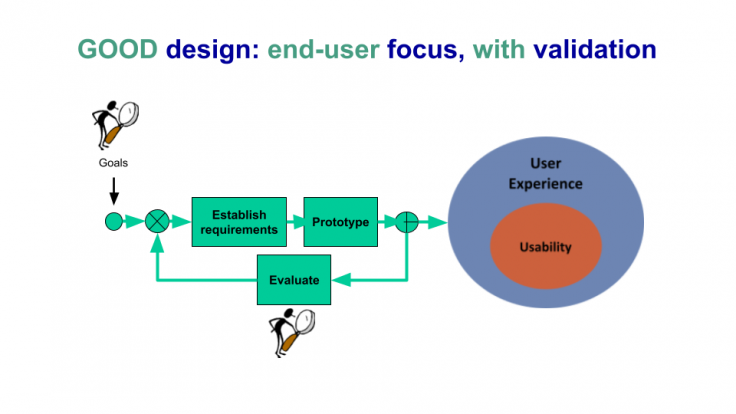
Over 100 years ago, author Dale Carnegie said: "When dealing with people, let us remember we are not dealing with creatures of logic. We are dealing with creatures of emotion". For this reason, the way we behave, present, and express ourselves is incredibly important. A compliment paid in the wrong way can be misunderstood, whereas criticism approached from the right angle can actually be received positively. IT solutions have a similar characteristic. The features of an application are not as important as the emotions generated throughout the user journey. Overall, this is known as the user experience (UX).
The user's emotions are a direct result of HOW the entire process supports their needs. As it is imperative that such a crucial aspect is not simply left to chance, it is necessary to leverage certain control engineering practices or frameworks, such as closed-loop control, in order to... well, control the UX. These practices include, but are not limited to:
- Defining goals (set points): There are two fundamental goal categories. UX goals are subjective, as they are associated with feelings, emotions, and user perceptions. They are crucial for commercial applications that require user adoption, which means users must be convinced to use them. On the other hand, usability goals are more objective and are associated with aspects such as user performance, efficiency, and learnability. These are essential for applications that are used by the user to execute repetitive scenarios. It is important to consider that aspects more aligned with the objective spectrum may also generate an emotional response. For example, a task that requires more interactions than necessary or more time than necessary may generate user frustration.
- Establishing requirements: When establishing requirements through a UX design, the focus is primarily on the user. Not only is it important to specifically identify who the target user is – and perhaps who the power users will be it is also necessary to understand what they do, their patterns, their behaviors and to identify exactly how the application can support them. These are known as user profiles, personas, and scenarios.
- Creating prototypes: By creating visual artifacts, both functional and non-functional, it is possible to represent the appearance and the human-computer interactions in a concrete manner. This makes it easy to gather feedback, as early in the process as possible, in a continuous and iterative way.
- Evaluating: The evaluation process can have many variants. For example, it could be controlled or not, and may involve users or not. It could be conducted in a natural environment or in a laboratory. Two specifics should be highlighted:
Heuristic evaluation, in which designers evaluate the level of conformity of interfaces according to guidelines or heuristics can include: availability of essential functions, system status visibility, etc
User research, or usability testing, is done by real users executing well defined tasks. For this process, it is important to use standardized scales, such as the System Usability Scale (SUS), so that results can be compared against other applications or against different versions of the same application.
The Nielsen-Norman Group recommends that approximately 10% of a project's overall budget should be invested in design practices. They analyzed 42 projects that followed these guidelines to measure the Return of Investment (ROI) of the design improvements through aspects such as sales conversion, traffic, user productivity, and the usage of specific functions. Across those projects, the ROI was between 100 and 200%. For internal or non-commercial projects, it is estimated that the benefits generated by usability improvements, as a result of design practices, are as follows:
- 8x the cost, for companies with less than 1,000 employees
- 20x the cost, for companies with 1,000-10,000 employees
- 50x the cost, for companies with 10,000-100,000 employees
Of course, design practices and improvements come at a price. However, the cost will be considerably lower than the losses in revenue, productivity and reputation if the proper design practices are not applied. The reality is that everything has a cost. It's just a matter of whether you want to pay to do the right things to have the optimal results, or if you want to pay to clean up poor results after the fact. From that perspective, design practices are really an insurance against the risk of a project not yielding the desired outcome.









